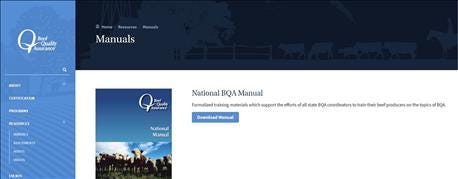June 22, 2016

Summertime increases of eye problems and foot rot commonly involve treatments with antibiotics, which legally and ethically calls for proper usage and following withdrawal guidelines.
"It is the producer's responsibility to be aware of withdrawal times of any drugs used in their operation," says Glenn Selk, Oklahoma State University emeritus animal scientist. "Unacceptable levels of drug residues detected in edible tissues collected at harvest may result in trace-back, quarantine and potential fines or jail time. Substantial economic losses may result for the individual producer as well as negative publicity for the entire beef industry.”

All this information is available in state and national Beef Quality Assurance guidelines.
A few of the things that should be obvious, but may not be:
• Follow all label directions for each product.
• Extra-label drug use may only be used when prescribed by a veterinarian working under a Veterinary/Client/Patient Relationship (VCPR).
• Observe strict adherence to extended withdrawal periods, as determined by a veterinarian within the context of a VCPR.
• Individual animal or group identification, depending on whether treated singly or as a group. These recommendations are on pages 11-12 of the national BQA manual.
• All processing and treatment records should be transferred with the cattle to next production level. Prospective buyers must be informed of any cattle that have not met withdrawal times.
When using injectable animal health products:
• Always follow label requirements.
• Products labeled for subcutaneous (SQ) administration preferably should be administered in the neck region.
• Products cleared for SQ, Intravenous (IV), Intranasal (IN) or oral administration are preferred.
• Products with low dosage rates are recommended, and proper spacing of injections should be followed.
• All products labeled for intramuscular use must be given in the neck region only (no exceptions, regardless of age).
• All products can cause tissue damage when injected IM. Therefore all IM use should be avoided if possible.
• No more than 10 cc of product is administered per IM injection site.
Selk reminds beef producers to establish and rely on a VCPR with your veterinarian and keep excellent records for three years after the sale of any animal.
BQA offers recordkeeping pages and/or booklets such as these in Oklahoma's program.
You May Also Like




